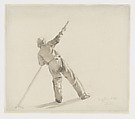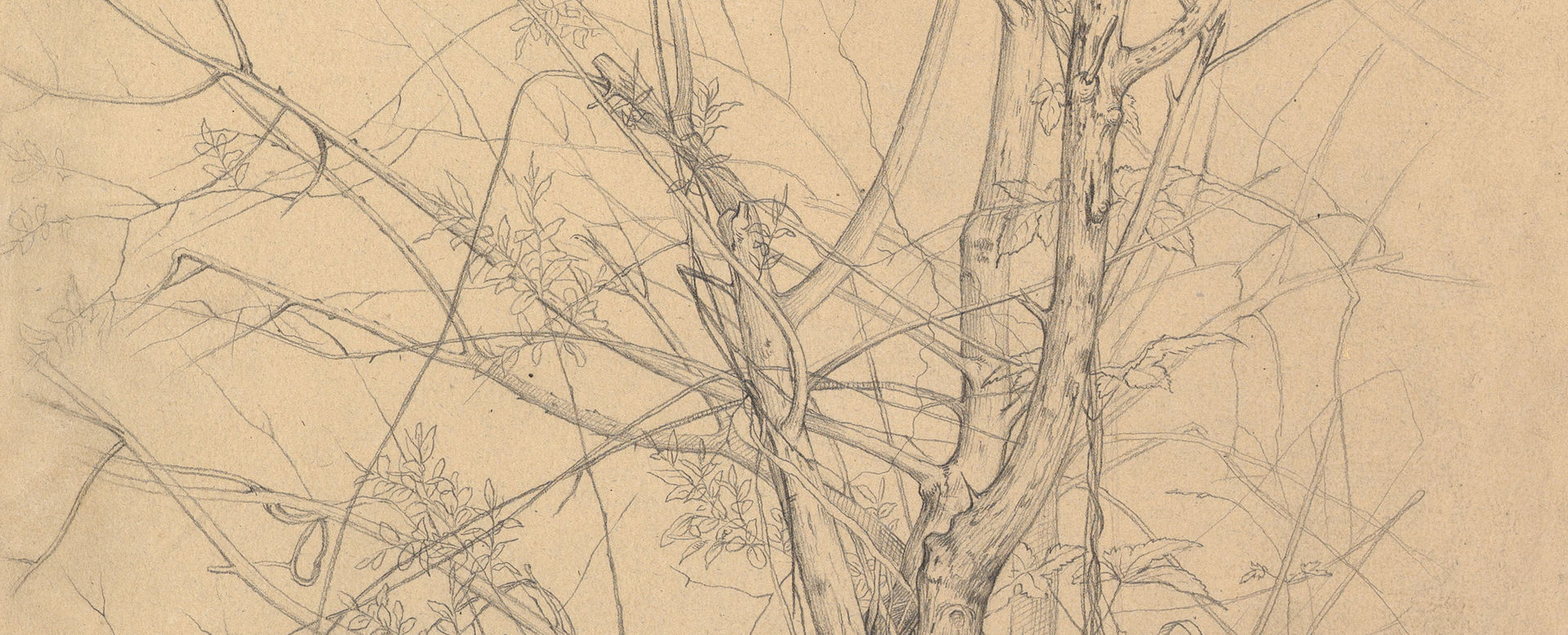A man holding an oar (study for the painting "Copenhagen Harbor by Moonlight")
Johan Christian Dahl Norwegian
Not on view
One of two known drawings made by the celebrated Norwegian artist Johan Christian Dahl in preparation for his magnificent oil painting Copenhagen Harbor by Moonlight
target="_blank" >(2019.167.2)) (begun in 1824 and completed in 1846), this sheet is a study for the boatman who appears at the far left of the final picture. In the drawing, we see the artist working out the exact position of the figure's proper right foot, along with the contours and creases of his pants. His pose—leaning to the left as he maneuvers his long oar through the water—is nearly identical in the two works, though what reads as bright sunlight in the drawing is, in the oil painting, translated into the subtle illumination of the moon. Like the other surviving preparatory drawing for the picture, a study for the two men on the pier (in the National Gallery Oslo), the drawing of the boatman is dated in Dahl's hand to 1846, indicating that he executed, or at least revised, the foreground figures during his second and final painting campaign, the first carried out two decades earlier. Dahl, who was 58 years of age in 1846, would remark that "This painting has taken more time than two paintings of similar size, it is a kind of picture that I shall surely not be able to paint any more. If it were not for the fact that it was already started, I should never have undertaken such work now with my weak eyes." A third drawing related to the painting, a ricordo dated 1847, is in the KODE Museums in Bergen.
This image cannot be enlarged, viewed at full screen, or downloaded.



